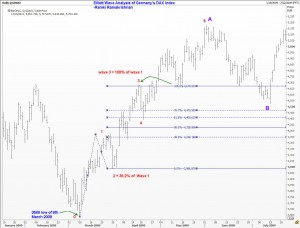
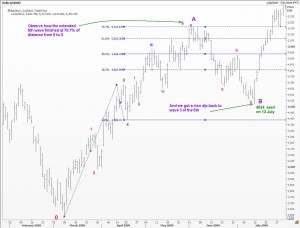
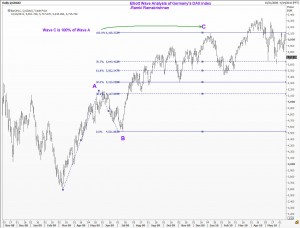
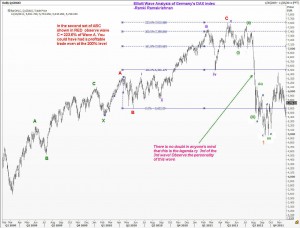
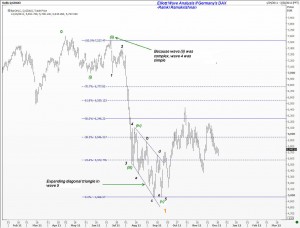
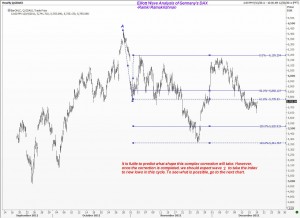
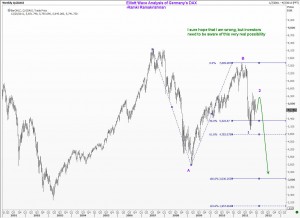 How bad can it get for the European stocks during this ongoing crisis? In particular, can Germany’s DAX index weather the storm? When one thinks back at how nicely the US stock markets performed during the last couple of years, I am probably going to be frightfully wrong with this analysis. Yet, you should be aware of how bad it can get if things go the way I have shown here.All I have done is to use my knowledge of the Wave Principle, and come up with one scenario. This scenario respects all the rules and guidelines that needs to be followed while using Elliott Wave Principle. However, the picture could change as we go forward, and hence you should be aware that this doomsday scenario is currently mostly academic. (Guess I have given sufficient room to escape your wrath if the index goes straight up!!)
How bad can it get for the European stocks during this ongoing crisis? In particular, can Germany’s DAX index weather the storm? When one thinks back at how nicely the US stock markets performed during the last couple of years, I am probably going to be frightfully wrong with this analysis. Yet, you should be aware of how bad it can get if things go the way I have shown here.All I have done is to use my knowledge of the Wave Principle, and come up with one scenario. This scenario respects all the rules and guidelines that needs to be followed while using Elliott Wave Principle. However, the picture could change as we go forward, and hence you should be aware that this doomsday scenario is currently mostly academic. (Guess I have given sufficient room to escape your wrath if the index goes straight up!!)
Anyway, I have also illustrated how you could count the waves from the significant low posted by the DAX index in March 2009. At the very least you would have gained some insight at how the waves tie in with each other. Look at the charts in the same order as posted.
Happy New Year folks!

